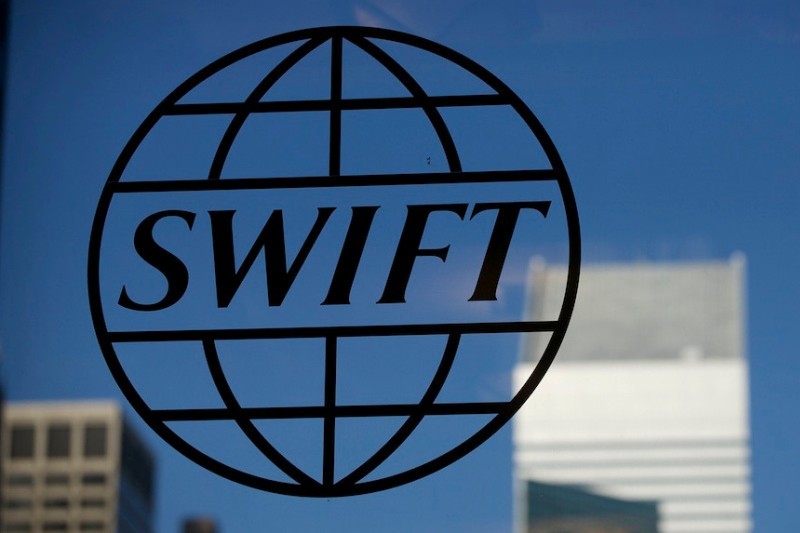
SWIFT declares on the website of its Global Payments Innovation service: “No other service can securely deliver hundreds of billions of dollars in payments around the world – timed in seconds.”
When one considers the existential threat which SWIFT is facing in the form of blockchain payment company Ripple, this sentence starts to sound more defensive than promotional.
The threat has been becoming increasingly real lately in the wake of Ripple’s initiatives and partnerships. For example, Santander announced in March its intention to become the first major bank to execute payments with blockchain technology via a Ripple service, and last month financial institutions successfully used a Ripple service to transfer money from the US to Mexico, discovering it to be much cheaper for them (according to Ripple).
SWIFT (the Society for Worldwide Interbank Financial Telecommunication) is a messaging service for banks which has acted as the world’s principal financial relay system since the late 1970s.
Ripple, market cap $26.3 billion, is a threat to the hegemon.
An article in the Financial Times mentions an incident last year as being a good representation of the relationship between what it describes as incumbent and challenger. It referred to SWIFT’s annual conference, Sibos, which took place in Toronto in October (the first Sibos happened in 1978 and they attract an average of 7,000 attendees).
October’s event was attended by Ripple. Ripple had a booth on the Sibos exhibition floor and also booked an entire venue nearby to hold a concurrent event. According to Forbes, Ripple actually ran shuttles between the two venues, tempting Sibos attendees away with Ben Bernanke and the Steve Miller Band.
Ripple CEO Brad Garlinghouse said that it was only because his company was denied enough floor space at the venue.
The future of sending money
At the Money20/20 Europe conference (“Where The Future of Money is Invented”) yesterday, Garlinghouse made further comments about legacy systems: “As a society, we are relying on rails built 50 years ago to enable cross-border transactions. Our customers are asking themselves: ‘If I want to be competitive for the next 10 years – for the next 50 – do I want to be dependent on what is effectively a horse and buggy system in a world of Teslas?’”
Harry Newman, SWIFT head of banking, said to the Financial Times today: “It is no secret that correspondent banking is a 1998 model and we are busy addressing that, bringing it to a 2018 model. But in terms of speed, what problems are you trying to fix? We have our own cloud and API solutions and are already doing payments in minutes or even seconds.”
165 banks, including 49 of the world’s biggest banking institutions, are using the new SWIFT system, and it reportedly now accounts for a quarter of SWIFT transfers.
Will this innovation be enough for SWIFT to survive? We reported in late 2017 that SWIFT had gained positive results with its own tests with blockchain technology, but according to the Financial Times, the company has concluded that it is not feasible for it to implement blockchain technology on a large scale, and it is sceptical that other institutions can.
“[Blockchain technology] is not straightforward to scale and it is not yet appropriate to do so. All the announcements made to date, they are either in-house or bilateral projects between banks. As you bring scale you get escalating complexity,” said Newman.
But this isn’t stopping the Russian version of SWIFT, SPFS, from doing exactly that. SPFS was developed in 2014 to replace SWIFT when the latter threatened to withdraw from Russia as part of economic sanctions levied against the country following its invasion of Ukrainian Crimea. The Russian central bank is reportedly working on transferring SPFS to a blockchain-based system, deciding that it is both cheaper and safer.
Meanwhile, Garlinghouse only expects the adoption of Ripple services to continue and the value of XRP to rise. He said to CNBC: “The value of any digital asset is going to be derived from the utility that it creates. I don’t know how to predict the price of XRP, I wouldn’t dare try… but I think that as we do things to enhance the utility of XRP then we’ll see that ecosystem grow and become healthier and healthier.”
He added: “By the end of next year I would certainly hope that we would see dozens [of banks using Ripple]. But we also need to continue to grow that ecosystem, grow the liquidity, and it all comes back to if we’re solving a real problem for real customers.”
(Photo: smugmug)

